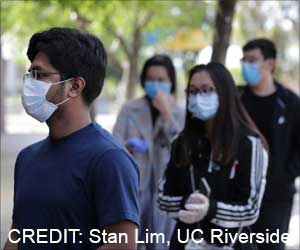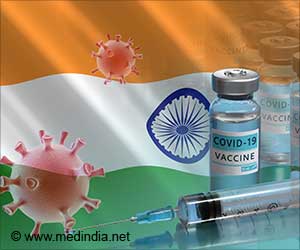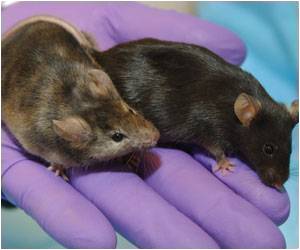High 40s Celsius temperature (as in India these days) would not make much difference to the coronavirus.

‘Assuming that we are capturing the death figures accurately. If that is the case, we don't understand why that is so.’





He disagreed to connect the sharp spike in cases in May due to reverse migration of the migrant workers. "If migrating people were infected and had not migrated, these would still show up in the total count. But, there is good reason to believe that the spike we are seeing now in newer areas, and in rural and small town India is due to it," said Jameel. Jameel also showed surprise at Bihar and West Bengal figures, as he said the former's health structure was worse compared to the latter.
Excerpts:
Q: AIIMS director had said the spike will come in June or July, we are already reporting more than 5,000 cases daily for more than a week now in May. How bad would be the peak of this viral infection?
A: Some leading epidemiologists believe that the peak in India would come around mid-July. If that were the case, and if we continue to get on average 5,000 cases daily, in 6 weeks we would add about 2.25 lakh cases to 1.65 lakh cases at present, amounting to about 4 lakh cumulative cases at peak. At the current case fatality ratio (CFR) of about 3, we are looking at about 12,000 deaths by peak time. But there is every indication that the infection rate is picking up with easing of the nationwide lockdown, so we may see more than 5,000 daily cases and a bigger number at peak.
Advertisement
As of today, we have about 4,700 Covid-19 deaths reported from India. If we multiply this by 200 (assuming 0.5 per cent mortality), we are looking at 9.4 lakh infections. But this number was 18 days ago, since that is the average time from infection to death.
Advertisement
Do remember that there would be a 6-8 week period of decline from the peak to baseline, which would add more cases and mortality. All this assumes that the projected numbers are factual estimates. Since more testing is throwing up more cases, the present numbers are likely to be an underestimate. But this gives you an idea of what we are looking at in the coming months.
Q: Initially few studies pointed out that heat may have an adverse effect on the virus, it is already 47 degrees Celsius and Covid-19 cases are increasing rapidly. What do you have to say on this?
A: There are two published international studies that have directly addressed the susceptibility of SARS-CoV-2 to high temperatures. A study from the WHO Collaborating Centres shows that SARS-CoV-2 is more stable at room temperature than other coronaviruses, and at 56 degrees Celsius there is quick reduction in infectivity.
Another study from Hong Kong published in the British medical journal Lancet shows that at 37 degrees Celsius, 56 degrees Celsius and 70 degrees Celsius the virus is inactivated in 2 days, 30 minutes and 5 minutes, respectively. Extrapolating from these data, temperatures in the high 40s (as in India these days) would not make much difference. The virus may still be active at these temperatures for 6 to 12 hours.
Q: Do you think movement of migrant workers' across the country led to this sudden spike in Covid-19 cases in May?
A: Based on the 2011 Census, 37 per cent of India's population or about 45 crore people were internal migrants. Of these, there were 5.6 crore inter-state migrants, most coming from the Hindi speaking belt of Uttar Pradesh, Bihar, Jharkhand, Rajasthan and Madhya Pradesh. The Economic Survey 2016 pegged the migrant workforce at 10 crore. A Report from Aajeevika suggests that there are currently about 12 crore people who migrate from rural areas to urban labour markets, industries and farms. The major net migration flows (see Figure) show that people migrate to states and cities that are today the hotspots for Covid-19. A World Bank report estimates the nationwide lockdown to have impacted the lives of over 4 crore migrant workers. It is estimated that about 10 per cent of these have already gone back home in the past few weeks.
Data in the public domain on new or cumulative infections are not granular enough to address what fractions of these are in migrant populations. Newspaper reports show infection rates in Bihar to have surged during May, coinciding with the arrival of migrants. Similar trends are being reported from Assam, Jharkhand, Himachal Pradesh, Uttarakhand and the North Eastern states.
Workers in the unorganized sector that are on a reverse migration generally live in crowded dwellings in urban slums. Unhygienic and dense living conditions and poor healthcare access make them vulnerable to all sorts of infectious diseases, especially those like tuberculosis and Covid-19 that spread through aerosol.
I don't think the spike in total cases in India in May is due to this reverse migration.
If migrating people were infected and had not migrated, these would still show up in the total count. But, there is good reason to believe that the spike we are seeing now in newer areas, and in rural and small towns in India is due to it. This trend is likely to continue in the coming weeks, and should be of much concern. There is poor healthcare infrastructure in these areas, which may spike up the mortality rates.
Q: India has a low case fatality rate (CFR), is it the silver lining in the backdrop of 5,000 to 6,000 cases every day?
A: One would have to think so, assuming that we are capturing the death figures accurately. If that is the case, we don't understand why that is so. There are a few hypotheses, but there is no data to prove any.
But let me also make another point. Reducing CFR with time is due to increased testing. Earlier we were testing only very sick people. Then as testing volume picked up we started testing symptomatic people and now we are testing increasing numbers of asymptomatic people. So, the CFR would naturally fall. There is too much being made of this number. It makes little sense.
Q: Covid-19 death rate per million people is very high in two states and one UT -- Gujarat, Maharashtra and Delhi. What are the main factors for this spike? Whereas death per million is low in other states.
A: There may be multiple reasons for this. The virus possibly arrived early in these places due to international connectivity and commercial activity, and got time to circulate. This coupled with high population density (in Mumbai and Delhi) and delayed government response (in Gujarat and Maharashtra) has likely led to this situation.
The CFR in India is 2.8 per cent. If we compare state-wise data to this average, Gujarat is high at 6 per cent, Maharashtra average at 3.3 per cent and Delhi lower at 1.9 per cent.
There is other data that makes me suspicious about mortality figures. Bihar with one of the worst hospital capacity per unit population shows a CFR of only 0.4 per cent, whereas West Bengal with one of the best ratios shows a CFR of 6.5 per cent. Further, anecdotal data from cremation and burial sites in Delhi show a 4-fold spike in funerals than normally recorded at this time. A suo moto order of the High Court of Delhi of May 28, notes that there is no room left in the Covid-19 mortuary of Lok Nayak Hospital, which is Delhi's largest Covid-19 treatment centre. All this suggests that mortality figures everywhere may be underestimated.
Q) How many times should a person be tested before saying he/she is Covid-19 free? In China, they are testing nearly 5 or 6 times on RT-PCR.
A: The RT-PCR test used to confirm Covid-19 has very high (>99%) sensitivity in laboratory settings. But in clinical settings, its sensitivity was found to be 66-88 per cent. This could be due to multiple reasons. The most common one is improper nasopharyngeal sample collection and storage. Failure to acquire enough samples or not taking it from deep in the nasopharynx does not give the right sample. If not stored properly, viral RNA degrades. In one study a positive test result was highest at week one (100%), followed by 89.3%, 66.1%, 32.1%, 5.4% and zero by week six. The timing of sample collection is also important. If collected too early or too late in the symptomatic phase, there may be too little virus to detect even by the sensitive RT-PCR test. Every test has a threshold. If done properly one or two tests should be sufficient to confirm a Covid-19 free state.
Source-IANS













